

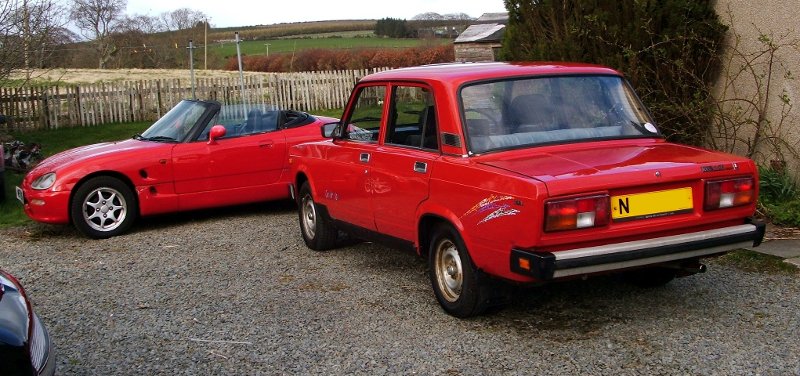
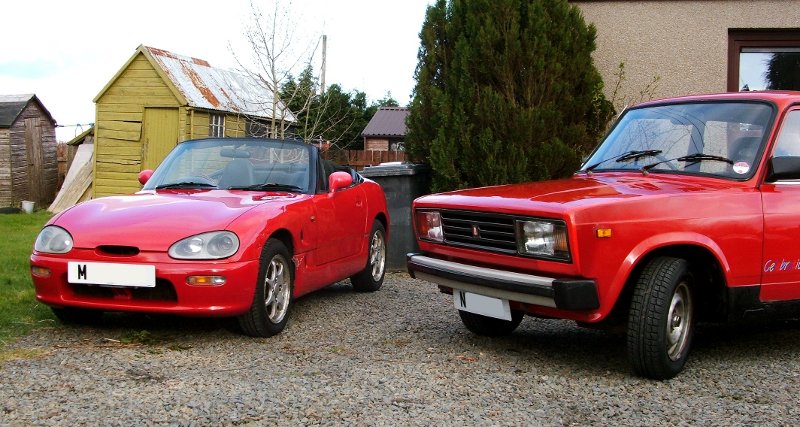
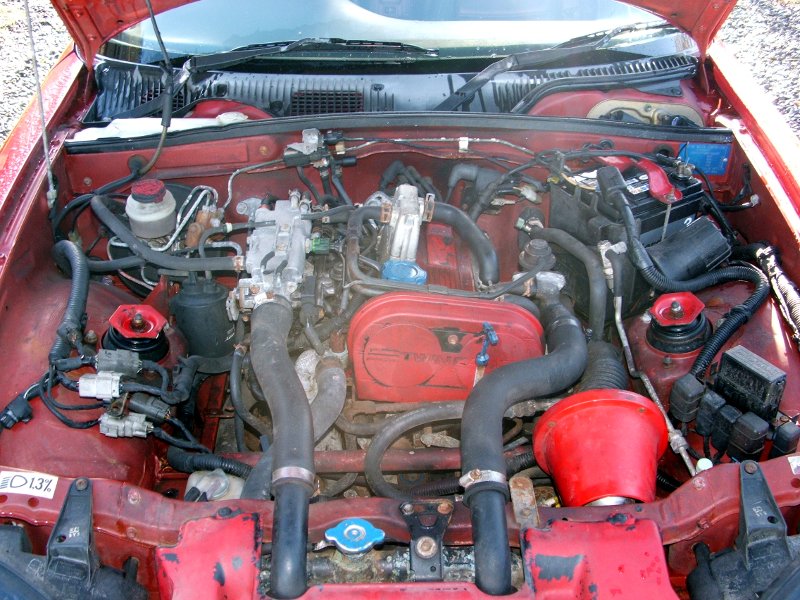


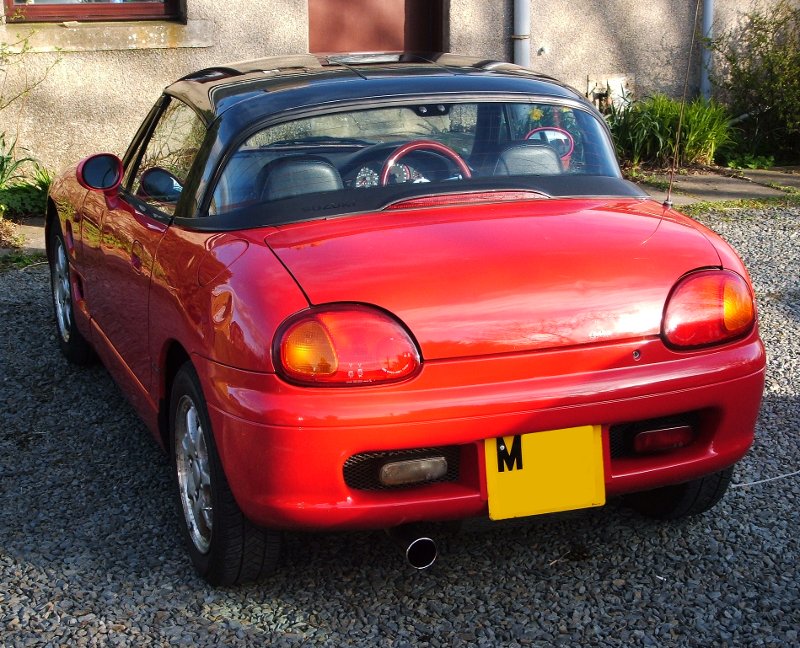

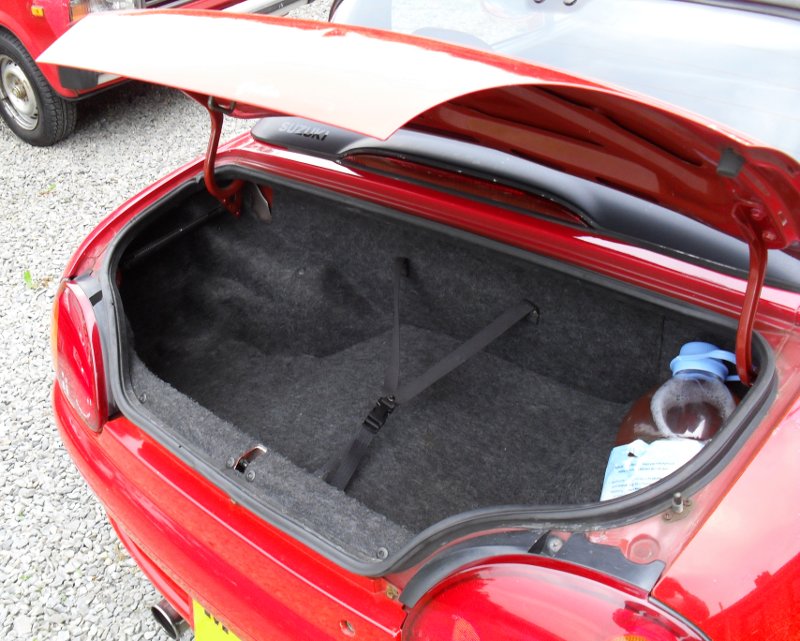
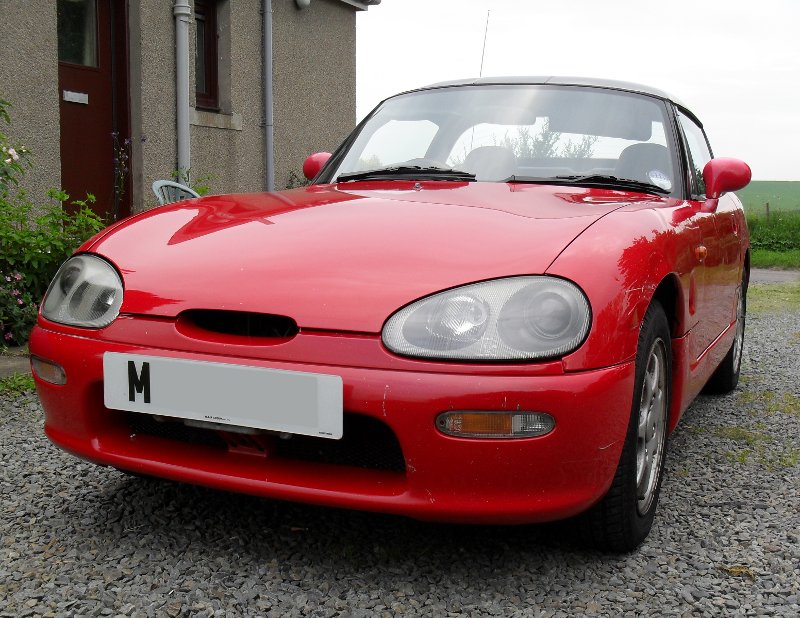
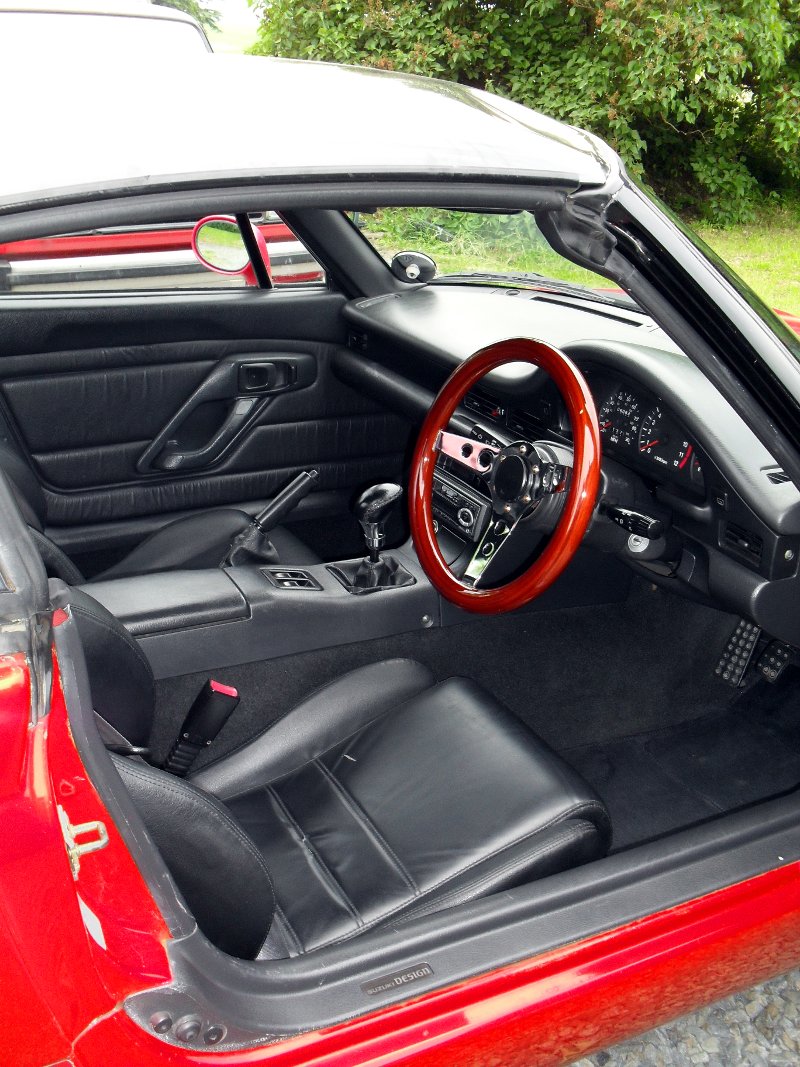
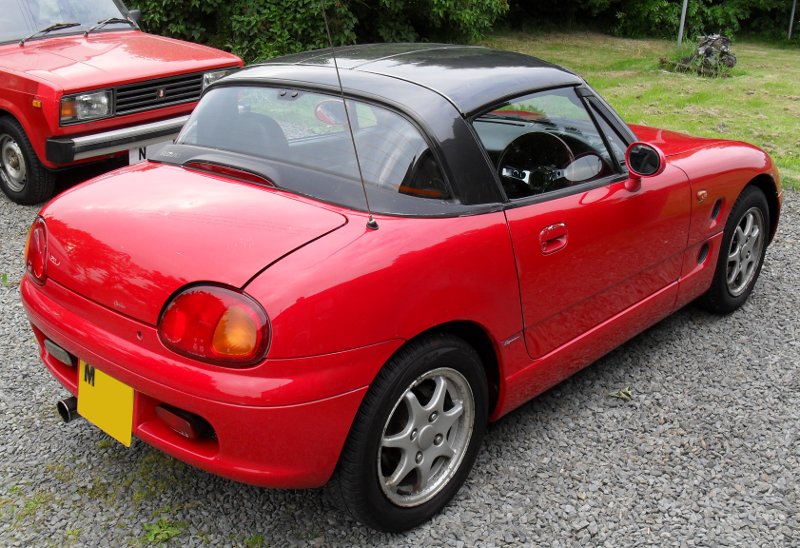
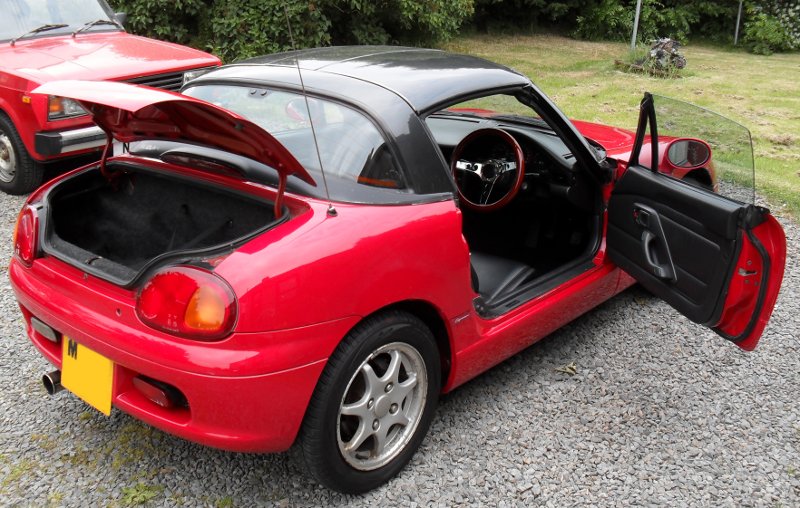
Update: May 2011.
When I picked this up, it needed a couple of very small welding patches to the front of the nearside rear wheel arch, a brake light bulb and the handbrake adjusted to get it through the MOT. I also took the opportunity to clean all the brakes up while I was there, as they were dry, rattling and squeaky. Once through the MOT, a replacement water pump was soon arranged to replace the leaky one on it when I got the car - especially given that it's driven by the timing belt. Last thing I wanted was the pump seizing up and taking that out.
It was quite clear once it was out that it had been leaking for quite some time.

If you ever replace this on your own car, the timing belt should really be replaced at the same time. The belt in the case of this car however had been done recently, and as such the decision was made to re-use it. Especially as the belt & tensioner kits aren't cheap. Do I say, not as I did! Overall replacing the pump wasn't a bad job, took a couple of hours start-finish, most of that was dismantling the engine bay to get at it!
The new pump is in place here - you can just about make it out centre-frame below (it's about the only clean looking silver thing in the engine bay!). Yes, the bottom half of the timing belt cover is missing...no idea what the story behind that is!

Aside from two services, an air con recharge and a couple of new drive belts for that and the alternator, very little happened after that happened mechanically over the last year. While the battery went flat on a couple of occasions when the car was left sitting for more than a week or so (it was known to be dodgy when I got it), otherwise it has been a very reliable little car.
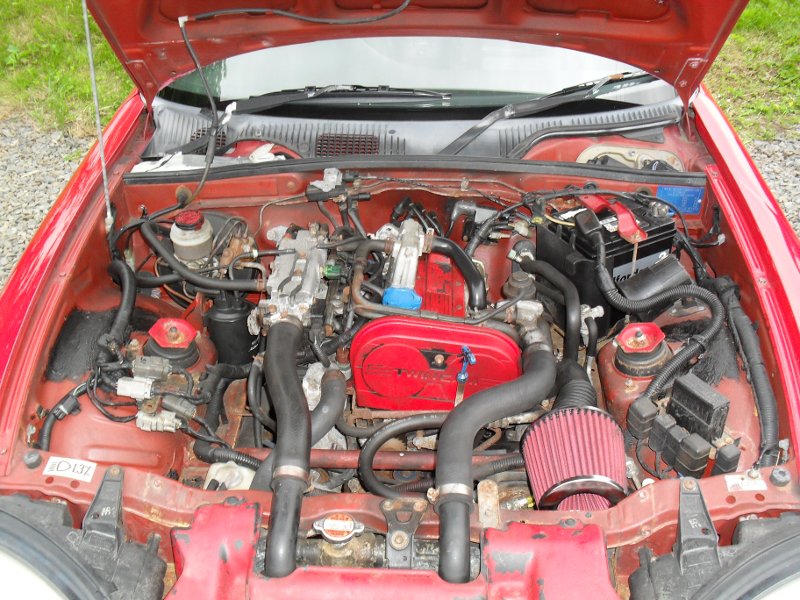
In 2011, it also attended a classic car show in Fyvie and received a lot of interest through the day - glad I printed out all the details and stuck a note in the window! Otherwise I would have been explaining what it was all day I reckon...Was great to see people's reactions though. Have taken a few cars there over the years, but this one has definitely captured the imagination of more people than most I think.

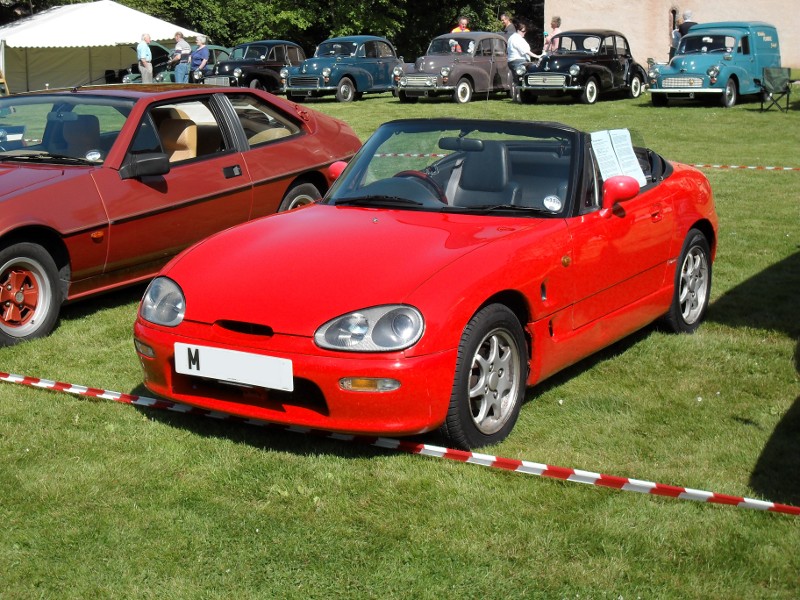
Cosmetically I did keep picking away at some of the issues, a few loose bits of trim were replaced and the paint was touched up wherever possible. The main change however was the addition of a set of racing stripes one Saturday afternoon when I got bored! Silly, pointless and over-the-top, but I didn't care! The wheels were also sanded down and repainted - the nearside ones have been done in the photograph below, unfortunately I hadn't got as far as the offside when the photos were taken!
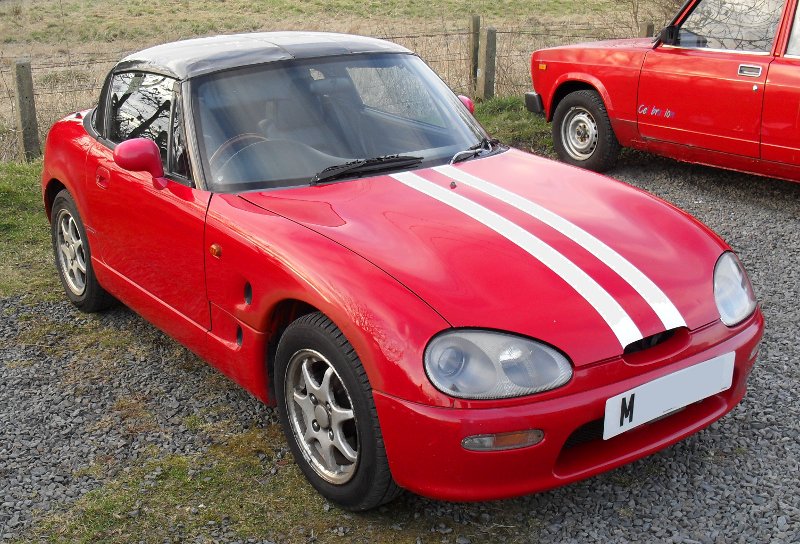
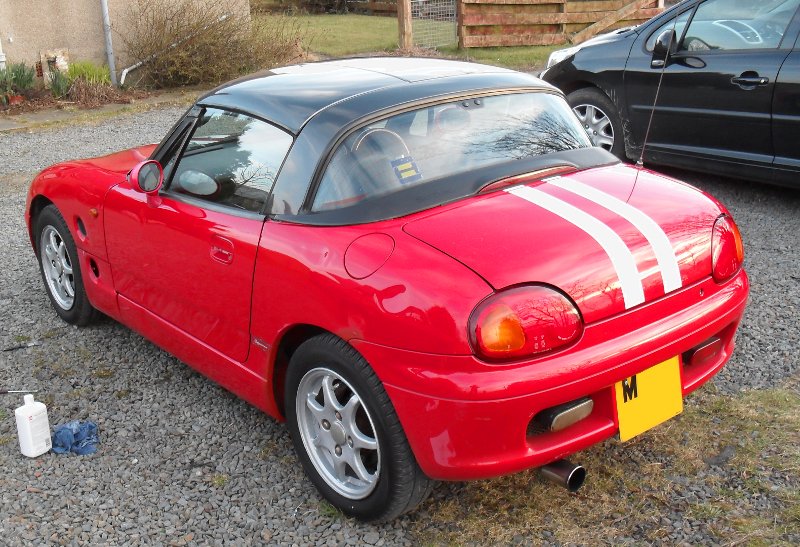
Cleaning the wheels up really did freshen up the look of the car no end!
I knew that with this years MOT coming up that there was going to be some work needed. This was reckoned initially to be an overhaul of the rear brakes as it looked from the discs as though they were getting a little lazy, and a couple of patches being needed on the nearside floorpan - tidying up old repairs. Unfortunately, the winter has been rather more unkind to the little Suzuki than first anticipated. We discovered upon closer inspection that approximately 50% of the rear part of the drivers side floorpan had actually become completely detached from the surrounding metalwork.
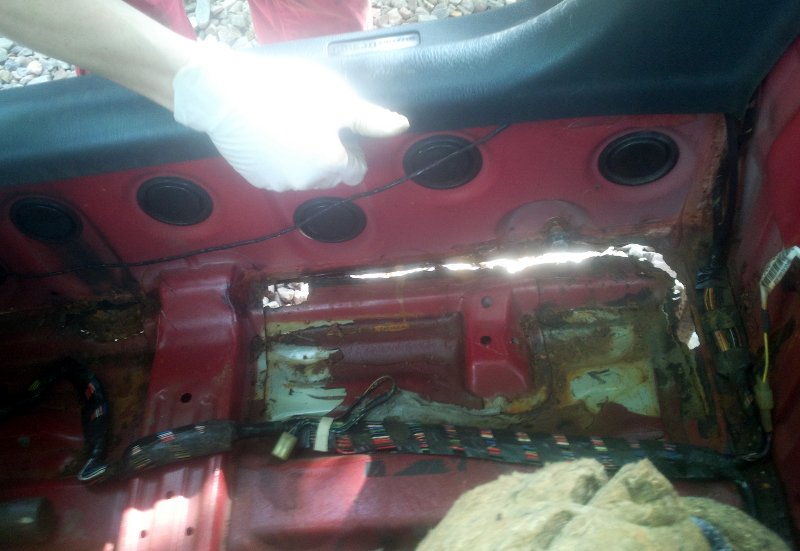
This obviously needs sorting - and the panel itself isn't in good shape either, so replacement would seem to be the best option. Unfortunately, floorpans for Cappuccinos are all but unobtainable new - they do appear now and then, but at astronomical prices. So it's looking increasing likely that we would have to fabricate something, which isn't something I'm really happy doing when you're talking about a large chunk of the car...a large chunk of the car which I SIT ON when driving! Given that there are also a dozen or so smaller patches needed elsewhere on the floorpan, the rear brakes to sort, and it's been noted now that the metal fuel lines aren't looking too clever either, it looks like the little Suzuki may well be off the road for quite a long while. Hopefully not permanently, but some very serious discussions are going to have to be had, and some hard decisions made.
In the meantime, attention is going to be diverted into getting the camper van on the road for the summer, as I actually need it in July!
UPDATE:
After much consideration and thinking and procrastinating, the decision was taken to sell the car in its current condition on to another enthusiast who is better equipped in terms of skill, resources and finances to tackle the rust. Last I heard at the start of January, most of the work on the offside floorpan was complete, with attention moving to the nearside. So work seems to be progressing at least. Personally, I really, really hope to see the car back on the road even though I won't obviously be driving it.
Of all the cars I've had over the years, and there have been a few, this one has probably been both the most fun and the most surprising. Surprising in that it's proven to be such a flexible little thing in spite of its diminutive size and frenetic nature. I dragged this thing from a near brush with death, did a tiny bit of welding, changed the water pump and gave it a service - then had a year's worth of absolutely trouble free motoring out of it, in use as my daily driver. It was 16 years old, had been neglected utterly for the last five years, and let's face it, on paper doesn't look like it would be exactly reliable!
The only things the Cappuccino couldn't do that you would expect of most cars I found were A: Carry anything particularly big, or B: Carry more than one passenger! I drove it around town a lot, on rural roads (where it's most at home to be honest, don't reckon there's a more fun car for a good twisty country road out there...), and had a few longer motorway trips. All of the above were dispatched with ease, in comfort and with surprising economy too, managing an average of 41.8mpg over the time I had it. It was even, much to my surprise damn near unstoppable in the ice and snow.
I miss all the cars I've had and no longer own. This is one however that I will definitely miss more than most. I'll miss the way you slot into the driving seat like in a go-kart, I'll miss the indescribably direct steering through which you can feel every ripple in the tarmac on a corner, I'll miss it's grip in the dry and tail-happy antics in the wet, I'll miss the noise it makes - both the addictive whoosh of the dump valve and the spine tingling howl of the exhaust note as it comes on cam at 5000rpm with the top down, I'll miss the silly little green light on the dashboard that tells you you've got boost from the turbo and just eggs you on more, I'll miss that stab in the back as the revs shoot from 5000rpm up to the 8500rpm red line, I'll miss gently cruising through town with the top down on a sunny day, but most of all, I'll just miss the way it could always come rain, snow or shine, it always could put a smile on my face the moment I got into it.
If you're someone who enjoys driving, and you find a solid, relatively rust-free Cappuccino, I seriously, seriously recommend that you give one a shot. They're not the toy that their diminutive size and 650cc engine size suggest. They're getting very rare now and only getting rarer, so if you want to find out what they're like to drive you're going to need to do it now before there aren't any left.
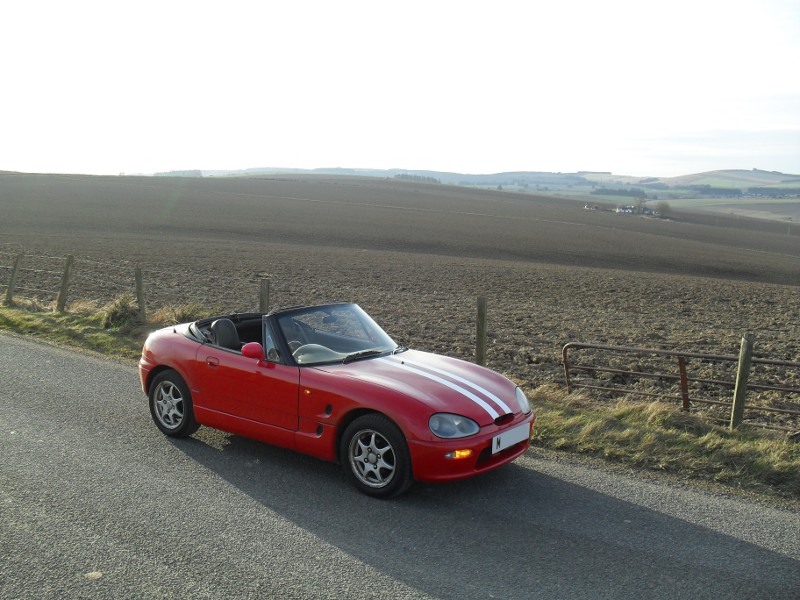
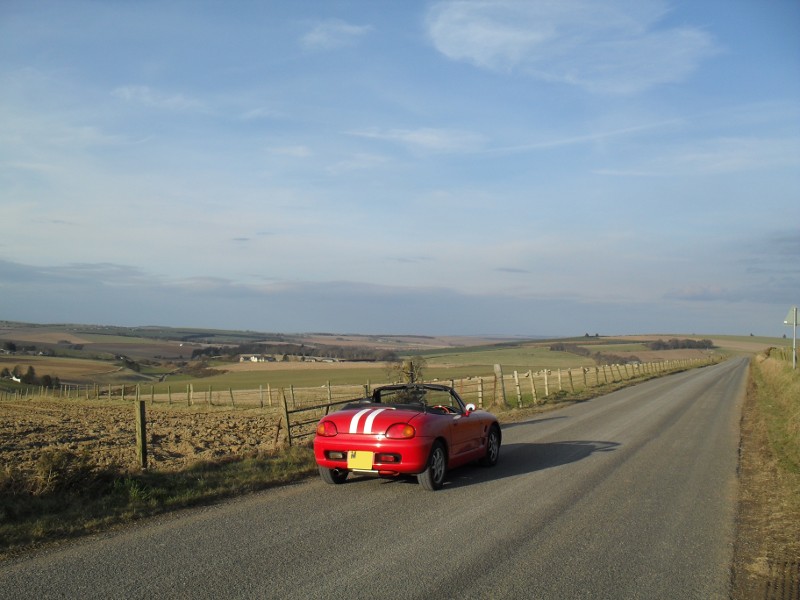
Fare well, my friend. You will be missed.
LOG ENTRY CLOSED: NOVEMBER 2011.
Manufacturer: Suzuki.
Model: Cappuccino.
Engine: 657cc 3-cylinder inline petrol, with turbocharger and intercooler.
Gearbox: 5-speed manual.
Power output: 65bhp.
0-60mph: 11seconds approx.
Max speed: 85mph (electronically limited).
Page change log:
28th April 2023: Revised Statcounter code to allow for HTTPS operation.